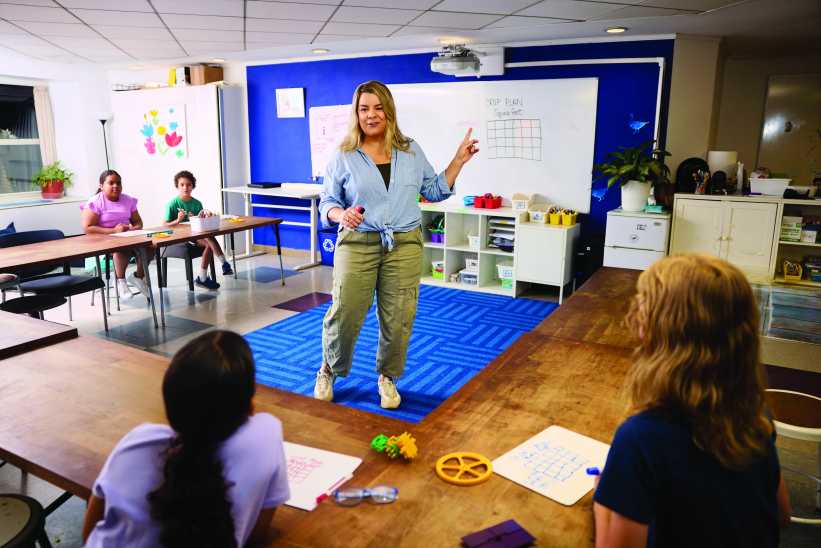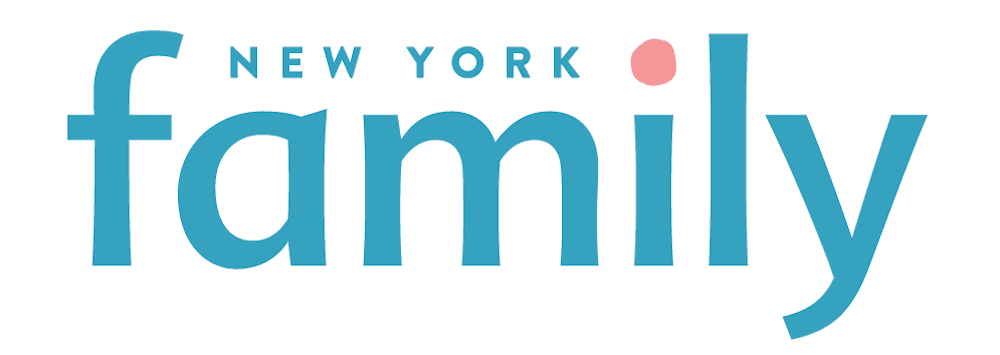
How the Hudson Lab School Is Breaking the Mold
It’s no secret that education in America faces many crises. Parents bemoan post-pandemic learning loss and achievement gaps, teacher shortages, children’s mental health issues, lack of parental involvement, and an overall decline in academic performance. While some public and private schools are attempting to address these issues, most remain married to traditional educational models that continue to yield the same dispiriting results.
Project-Based Learning
The Hudson Lab School is an independent K-8 school in Hastings-on-Hudson that’s bucking these negative trends with a simple yet radical idea: let kids be kids. The Hudson Lab School uses Project-based Learning (PBL), which the University of Pennsylvania defines as “an approach to teaching and learning that has students take on real-world problems in authentic ways. It engages students in authentic roles like that of a scientist, historian, or mathematician to work on authentic problems.”
Kim Mishkin is the Head of School for the Hudson Lab School and an enthusiastic advocate—and dynamic implementer—of PBL. She shared the school’s mission with the Westchester Family: “Hudson Lab School immerses students in project-based learning, inspiring them to embrace challenging academics and collaborate to solve real-world problems. We cultivate the next generation of inquisitive creators, strategic thinkers, and compassionate leaders, equipping them with the skills and mindset needed to thrive in an ever-evolving future.”
Psst… Check Out 5 Westchester Libraries with Free STEAM Programs
“The Hudson Lab School is the only school in Westchester that uses Project-Based Learning and one of the few that do so on the East Coast,” Mishkin says. “So we’ve become a beacon for educators who believe in this approach.” Those teachers are recruited from all over the country as the school draws educators who want to practice PBL. “A lot of our teachers self-select because they believe in and want to implement our vision.”
From its beginnings in 2017 with 11 students gathered in one room to its current student population of 68, the Hudson Lab School has grown primarily through word of mouth, with a bump in enrollment after the COVID pandemic, when concern about learning loss started to grow.

What Sets the Hudson Lab School Apart?
One of the most desirable features of the Hudson Lab School is its small student-to-teacher ratio of approximately 9 students to 1 teacher, which compares favorably with the national average of 15 students for every teacher employed by the average public school, and an average class size of 20. “One of our advantages is that we use co-teaching, so that there are two teachers in every classroom,” says Mishkin.
“Our teachers have to be highly creative and flexible because students have agency to direct their own learning. That means our teachers never know when students will take their projects in a completely new direction. Our teachers are experienced; most have 10 years or more in education, and 93% have advanced degrees.”
Grownups aren’t the only teachers at the Hudson Lab School, however. One feature of the school is that students share classroom space with kids of different ages, so that younger students have relatable role models they can aspire to, while the older students grow into leadership roles by implementing the skills they’ve mastered as peer-to-peer teachers.
Intergenerational Learning
Another unique aspect of the Hudson Lab School is its shared space with a skilled nursing facility, which helps students develop social skills, deepen their empathy, and opens them up to perspectives they might miss in a traditional school setting.
The school is divided into a lower school for kindergarten through 5th grade and a middle school for grades 6 through 8. The two schools share a belief that learning isn’t measured by standardized testing outcomes, but also as a process that will be with them for their entire lives. Middle school graduates leave the Hudson Lab School as prepared as their non-PBL-educated peers or more. They also carry a deeply ingrained belief in their ability to compete and learn in high school and beyond along with them.
To that end, small, skill-based groups ensure that students master foundational subjects such as math, reading, and writing at their own pace, because early childhood development differs for every child.

A School in Partnership with Mother Earth
The Hudson Lab School ensures students don’t stay cooped up inside a classroom for an entire day. Students get at least an hour each day on the school’s Great Lawn, in the Wild Playspace, or on the Four Square patio. This outdoor time complements a decidedly hands-on curriculum, in which students explore gardening and nature, digital skills (each student has a school-supplied laptop), and art as catalysts for broadening their connection to their community and the world.
Curious about Hudson Lab School?
Head of School Kim Mishkin answers parents’ top questions.
Q. How can families experience the school before applying?
A. Parents can book in-person school tours (Mondays at 9 am, Wednesdays at 9:30 am) and attend virtual info sessions.
Q. What kind of extracurricular or extended learning programs are offered?
A. We offer after-school programs (tinkering, robotics, fencing, soccer, D&D, etc.), “Camp Hudson” (K–5), which focuses on tinkering, making, nature, and creative play, and day camps on holidays (Indigenous Peoples Day, Veterans’ Day) and spring break.
Q. How does Hudson Lab integrate foundational academics (reading, writing, math) within the project-based model?
A. Literacy is integrated into every project, with students reading fiction and nonfiction, analyzing sources, and writing to express ideas and document research. Math is taught independently and within projects, focusing on data, measurement, and budgeting. Academic skills are the foundation of projects, practiced naturally. For example, design and engineering projects use geometry, history projects involve primary sources, and business simulations require financial literacy and persuasive writing.
Q. Why PBL?
A. Our academic approach ensures core subjects are not abstract, but practical tools for meaningful work. Students retain knowledge longer through authentic application, developing content mastery alongside essential skills like teamwork, communication, and adaptability.
Q. How does HLS support students who are struggling or need more structure?
A. With an 8:1 student-to-teacher ratio, Hudson Lab offers small group and individualized instruction. We can support many, but not all, IEPs; support is determined during admissions. The Hastings-on-Hudson school district provides OT, PT, and counseling services for students with IEPs.
Q. Is the school accredited, and do they meet state standards?
A. The state of New York deemed Hudson Lab substantially equivalent to the local public schools in Hastings-on-Hudson. In addition, HLS is a provisional member of the New York Association of Independent Schools (NYSAIS) and is in the process of becoming fully accredited through NYSAIS.
Q. Is the model suitable for my child’s personality and learning style?
A. The school is a great match for independent, curious learners who thrive in nontraditional, exploratory environments. However, families seeking structure, standardized evaluation, or a focus on core academics might find it less aligned.
Q. What special classes are offered?
A. HLS offers specials like music, art, tinkering, gardening, physical education, and “Biig” (Belonging, Inclusion, Intergenerational Learning). Grades 2-8 also have “Explorations,” a term-based class. For 2025-2026, Explorations will be theater-themed, allowing students to choose costumes, set design, acting, or dancing.
Q. Is after-school support (e.g., homework help) available, or should parents plan for outside tutoring?
A. Homework help is offered several times a week before and after school, and the school may recommend outside tutoring from time to time.
To learn more about the Hudson Lab School, visit their website at hudsonlabschool.com and schedule a visit.
Psst… Check Out 46 Free Family Activities to Do in Westchester














